low poly AR vr desk Low-poly 3D model
A desk or bureau is a piece of furniture with a flat table-style work surface used in a school, office, home or the like for academic, professional or domestic activities such as reading, writing, or using equipment such as a computer.[1][2] Desks often have one or more drawers, compartments, or pigeonholes to store items such as office supplies and papers.[2] Desks are usually made of wood or metal, although materials such as glass are sometimes seen.
Some desks have the form of a table, although usually only one side of a desk is suitable to sit at (there are some exceptions, such as a partners desk),[3] unlike most usual tables. Some desks do not have the form of a table, for instance, an armoire desk[4] is a desk built within a large wardrobe-like cabinet, and a portable desk[5] is light enough to be placed on a person's lap. Since many people lean on a desk while using it, a desk must be sturdy. In most cases, people sit at a desk, either on a separate chair or a built-in chair (e.g., in some school desks). Some people use standing desks to be able to stand while using them. Desk-style furniture appears not to have been used in classical antiquity or in other ancient centers of literate civilization in the Middle East or Far East, but there is no specific proof. Medieval illustrations show the first pieces of furniture which seem to have been designed and constructed for reading and writing. Before the invention of the movable type printing press in the 15th century, any reader was potentially a writer or publisher or both, since any book or other document had to be copied by hand. The desks were designed with slots and hooks for bookmarks and for writing implements. Since manuscript volumes were sometimes large and heavy, desks of the period usually had massive structures.[8]
Desks of the Renaissance and later eras had relatively slimmer structures, and more and more drawers were added as woodworking became more precise and cabinet-making became a distinct trade.[8] It is often possible to find out if a table or other piece of furniture of those times was designed to be used as a desk, by looking for a drawer with three small separations (one each for the ink pot, the blotter and the powder tray) and storage for pens.
The basic desk forms were developed mostly in the 17th and 18th centuries. The modern ergonomic desk is a refinement of the mechanically complex drawing table or drafting table[9] from the end of the 18th century. Refinements to the first desk forms were considerable through the 19th century, as steam-driven machinery made cheap wood-pulp paper possible towards the end of the first phase of the Industrial Revolution. This allowed an increase in the number of the white-collar workers. As these office workers grew in number, desks were mass-produced for them in large quantities, using newer, steam-driven woodworking machinery. This was the first sharp division in desk manufacturing. From then on, limited quantities of finely crafted desks have been continued to be constructed by master cabinetmakers for the homes and offices of the rich, while the vast majority of desks were assembled rapidly by unskilled labor from components turned out in batches by machine tools. Thus, age alone does not guarantee that an antique desk is a masterpiece, since this split in quality took place more than a hundred years ago.
More paper and correspondence drove the need for more complex desks and more specialized desks, such as the rolltop desk which was a mass-produced, slatted variant of the classical cylinder desk.[10] It provided a relatively fast and cheap way to lock up the ever increasing flow of paperwork without having to file everything by the end of the day. Paper documents became voluminous enough to be stored separately in filing cabinets. Correspondence and other documents were now too numerous to get enough attention to be rolled up or folded again, then summarized and tagged before being pigeonholed in a small compartment over or under the work surface of the desk. The famous Wooton desk and others were the last manifestations of the pigeonhole style. The surfaces of some newer desks could be transformed into many different shapes and angles, and were ideal for artists, draftsmen, and engineers.













